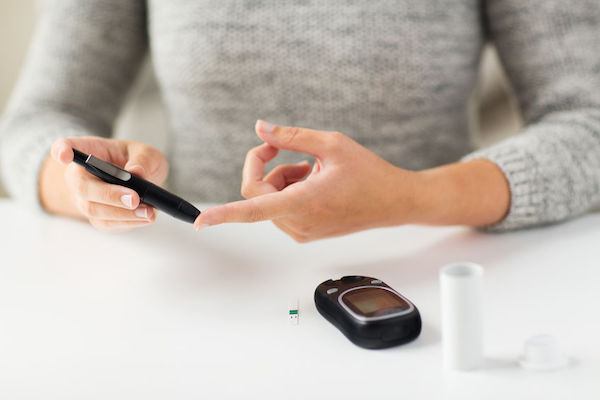There are two main types of diabetes: Type 1 occurs when the pancreas stops producing insulin. It usually starts in young people under the age of 30 and is often hereditary. Type 2 is caused when there is either insufficient insulin or it does not work properly. About 85 to 90 percent of all people with this chronic condition are Type 2, and many people who have this condition go undiagnosed.

Then there is diabetes insipidus: it shows the same symptoms as the more common forms of diabetes, but runs a completely different course. It is characterised by excessive thirst and an inability by the kidneys to conserve water.
During pregnancy, many women also develop gestational diabetes (mellitus) due to hormonal changes – without adequate treatment, this can result in miscarriages, birthing complications or birth defects.
According to a recent World Health Organization (WHO) report, a staggering 380 million people worldwide will have diabetes by 2025.
What are its symptoms?
The main diabetes symptoms across the two main types are an increased need to urinate, thirst and fatigue.
Other symptoms include:
- Unusual thirst
- Unusual weight loss, even though you are eating (Type 1)
- Blurred vision
- Cuts/bruises that heal slowly, boils and itches
- Frequent or recurring infections
- Tingling, pain, or numbness in the hands/feet (Type 2)
Women with gestational diabetes often show no symptoms, so testing is important.
How is it diagnosed?
Diabetes diagnosis is crucial if complications are to be prevented or delayed. If you are over 35 and are at risk, you should be tested every year. A simple finger-prick test at your local pharmacy or clinic can quickly indicate the likelihood that you may have diabetes.
Look out for the following risk factors:
- Excessive weight
- A family history of diabetes
- High cholesterol
- High blood pressure (hypertension)
- A high-risk group: in South Africa, if you are of Indian descent you are at particular risk
- Having given birth to a baby that weighed over 4kg at birth, or have had gestational diabetes during pregnancy.
What are your treatment options?
The aim of diabetes treatment is to minimise any elevation of blood sugar without causing abnormally low blood sugar levels. Type 1 is treated with insulin, exercise and a diabetic diet.
Type 2 is treated first with weight reduction, a diabetic diet and exercise. It is a progressive condition, however, and, over time, you may need more help to manage your blood glucose levels. Depending on its severity, Type 2 could possibly include insulin therapy or oral diabetes medication.
If you have prediabetes, the state in which you may show some but not all of the criteria for diabetes, timely changes to your lifestyle can reverse these symptoms.
Can it be prevented?
There’s no known way to prevent or cure Type 1 diabetes but it can be successfully managed by following a strict regime of administering insulin (with an injection or pump), by following a healthy diet and taking regular exercise.
Type 2 diabetes can be prevented or delayed through following a healthy lifestyle.
What to do now
Clicks Clinics will help you prevent, identify and manage diabetes with their wide range of screening tests and health assessments. These include:
- Glucose Screening with Consultation
- Urine Test (tests for blood, protein and glucose)
- Blood Pressure Test
- Cholesterol Testing and Consultation
- Lipogram Blood Test (to determine different types of cholesterol)
- Foot Screening Consultation (to check for diabetes-related foot problems)
- Clicks Full Basic Screening (BP, Body Mass Index or BMI, meal guide and exercise plan)
- Clicks Screening Measurements only (BP and BMI)
- Clicks Comprehensive Screening (BP, BMI, Glucose and Cholesterol screening, plus meal and exercise plan).
To make an appointment at a Clicks Clinic, call 0860 254 257 or visit Clicks Clinics online.
For more info
Diabetes South Africa
IMAGE CREDIT: 123rf.com
